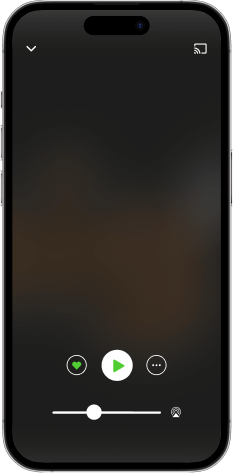(6 Min. Rant) Don't Look a Gift Horse in the Mouth
(Rated PG)Don’t Look a Gift Horse in the Mouthinstamus tamen inmemores caecique furore,et monstrum infelix sacrata sistimus arce.Aeneid, II.244-245(Yet blindly we persist, forgetful in our fury, and we place the monster, unhappy, upon our sacred citadel.)I like to think about the origins of phrases we use in English. Imagine you’re a foreigner and someone says, “go on, spill the beans…”Here are a few idioms we use without thinking about them:Bite the bullet. Here’s an actual example from the Cambridge dictionary of how this might be used today:“I decided I had to bite the bullet and take a couple of math classes even though I knew they were hard.”…But really, biting the bullet meant, “No, it’s not algebra for you son, you’re going into surgery! It’s the 1860s so instead of a nice oxygen mask and a cute little countdown, you’ll calmly bite on a bullet while they saw something off. I imagine after a few minutes of that, the dentist will be on his way to see you as well.”Let the cat out of the bag. “Don’t let the cat out of the bag!”This is one a butcher told me about. Really, you should let the cat out of the bag before you leave the butcher. He said a rabbit and a cat will look exactly alike when skinned except for a few signs. Hence you could fool someone hoping to make a rabbit stew by skinning a couple cats. —Ooh, skin the cat, there’s another one.Anyhow, you get home to the wife and kids, and instead of letting a delicious rabbit or piglet out of the bag, you let a cat out of the bag to show them just how badly papa’s been scammed at the slaughterhouse.The whole nine yards. You ever hear that and think, “but isn’t it ten yards to a first down?” Well, this one’s not football related folks, it’s war related! Machine gun related. Another gruesome one: “Go on boy! Mow the lot of them down. Give it your all, chap! Feed the gun the whole nine yards— of bullets.”Raining cats and dogs. Isn’t that a cute one? “Wow, it’s raining cats and dogs outside!” Sorry— not cute. I quote Jonathan Swift’s famous poem, ‘A Description of a City Shower,’Drowned puppies, stinking sprats, all drenched in mud,Dead cats and turnip-tops come tumbling down the flood.It’s raining so hard, dogs and cats are now washing up in the gutters.And, saved by the bell, “Gee! I’m sure glad I was saved by the bell!” Well, this might be related to boxing, but it also could be related to a device they put in coffins— only a few hundred years ago, mind you— where, should you just happen to be buried alive, naturally after your funeral and after your many days of exhibiting no pulse or breathing, should you just happen to be buried alive, instead of frantically clawing on the back of your coffin without any dignity, you could simply pull on a little string connected to a small bell six feet above. Caution: upon waking in a coffin to total darkness you previously hadn’t been able to conceive, remember not to pull too hard and break the string. Remain calm. Ring daintily. A nearby gardener, whistling while trimming the flowers on a surrounding tombstone, will hear your patient plea and dig you up again. You’ll be back at the pub in a few hours— saved by the bell. Phew!So you see, most of these expressions come from gruesome, if not downright morbid backgrounds. …But I think that gives our language its special grit, don’t you?—Today anyhow I want to talk about a proverb, not an idiom. Proverbs are supposedly rooted in folk wisdom, rather than sentences that no longer make literal sense.So, sure, a bird in the hand is worth two in the bush, this makes sense to me, but I still have no idea why I can’t put all my eggs in one basket. I’m not going to the coop with two baskets. Can we just save some time here and make the proverb, don’t drop the basket!The proverb I want to dissect is ‘Don’t look a gift horse in the mouth.’ It generally means something like, when your uncle gifts you a snow globe from a city you’ve never visited, don’t remind yourself that he shares only 25% of your DNA, just pretend to be thrilled, hug him and say thanks. Don’t look the gift horse in the mouth. You may, however, throw the gift horse straight in the garbage.You probably don’t hear many people saying that anymore— the horses have all disappeared— but when ‘driving’ meant riding on a horse, and not turning the ignition, there was horse wisdom, and one piece of wisdom was that you could tell how healthy a horse was, by looking at its teeth.So imagine how this phrase originates: your neighbor comes bearing the gift of horses, but you’re not supposed to check if they’re healthy.The nerve of these people, bringing you horses that are soon your problem!“Honey, Ol’ Shadow’s looking pretty weak, and I don’t have the nerve to put him out of his misery. What d’ya say I bring ‘em round to the Campbell’s… I think that daughter of theirs had a birthday last week?”Get real. If my neighbor comes with marmalade I’m checking it for mold. If he comes with a horse? I’m going straight for the mouth. …Well, as a pianist I personally am not sticking my hands into a horse’s mouth, but if Farmer Joe, who previously has brought me no gifts, suddenly shows up with a cheeky grin and a horse with a bow on its head that appears to be tied just so it’s clamping the horse’s jaws shut— I'm gonna make sure an equine dentist is on staff.‘Oh hey, Farmer Joe! To what do I owe this pleasure? I see you’ve brought your horse. He’s looking a bit… is he alright? What’s that? You want me to ha— a horse? For me? Farmer Joe, Wow! I don’t really ride hor— I shouldn’t ride him? Oh, well I suppose I’d better get some hay anyho— oh, he’s not eating much. I see… well, is he, perhaps… I should look in his— no? Honestly, you’re looking a little tense, Farmer Joe. Look, if you just prefer if I pay the knacker and we forget the whole thing, I’ll pretend you wouldn’t let me look your gift horse in the mouth. You know, Farmer Joe, I’m starting to think you’ve invented a pointless proverb because you’re out of bullets and your shovel is broken.’Always look a gift horse in the mouth. That’s what I say.A friend bearing gifts requiring medical attention is a terrible friend. How’s that for a proverb?You know who didn’t look a gift horse in the mouth? The Trojans.Note:The outro music is one of the movements Bach cut from his Magnificat during its transposition from E-flat into D. You can find it, and a few more movements not included in the later version, listed under BWV 243a.Become a subscriber at wtfbach.substack.com (Paid or free subscriptions available!)https://www.paypal.me/wtfbachhttps://venmo.com/wtfbachhttps://cash.app/$wtfbachThank you for your support. Get full access to WTF Bach at wtfbach.substack.com/subscribe


